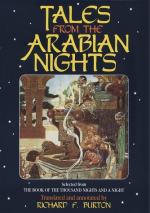“This absurd story,” adds Chambers, “is localised in almost every district of Scotland always referring to London Bridge, and Hogg (the Ettrick Shepherd) has worked up the fiction in a very amusing manner in one of his ’Winter Evening Tales,’ substituting the Bridge at Kelso for that of London.”
But the legend of the Chapman, or Pedlar, of Swaffam, in Norfolk, handed down, as it has been, from one credulous generation to another, with the most minute details and perfect local colour, throws quite into the shade all other versions or variants of the ancient tale of the poor man of Baghdad. Blomfield, in his “History of Norfolk,” 8vo ea., vol. vi. 211-213, reproduces it as follows, from Sir Roger Twysden’s “Reminiscences”:
“The story of the Pedlar of Swaffam Market is in substance this: That dreaming one night, if he went to London, he should certainly meet with man upon London Bridge which should tell him good news; he was so perplexed in his mind that till he set upon his journey he could have no rest. To London therefore he hastes, and walked upon the Bridge for some hours, where being espied by a shopkeeper and asked what he wanted, he answered, ’You may well ask me that question, for truly (quoth he) I am come hither upon a very vain errand,’ and so told the story of his dream which occasioned his journey. Whereupon the shopkeeper replied, ’Alas, good friend, should I have heeded dreams I might have proved myself as very a fool as thou hast; for ’tis not long since that I dreamt that at a place called Swaffam Market, in Norfolk, dwells one John Chapman, a pedlar, who hath a tree in his back yard, under which is buried a pot of money. Now, therefore if I should have made a journey thither to dig for such hidden treasure, judge you whether I should not have been counted a fool.’ To whom the Pedlar cunningly said, ’Yes, truly: I will therefore return home and follow my business, not heeding such dreams hence-forward.’ But when he came home (being satisfied that his dream was fulfilled), he took occasion to dig in that place, and accordingly found a large pot full of money, which he prudently concealed, putting the pot among the rest of his brass. After a time, it happened that one who came to his house, and beholding the pot, observed an inscription upon it, which being in Latin he interpreted it, that under that there was another twice as good.[FN#380] Of this inscription the Pedlar was before ignorant, or at least minded it not; but when he heard the meaning of it, he said, ’ ’Tis very true, in the shop where I bought this pot stood another under it which was twice as big’; but considering that it might tend to his further profit to dig deeper in the same place where he found that, he fell again to work and discovered such a pot as was intimated by the inscription, full of old coin; notwithstanding all which, he so concealed his wealth that the neighbours took no notice of it. But not long after the inhabitants of Swaffam resolving




